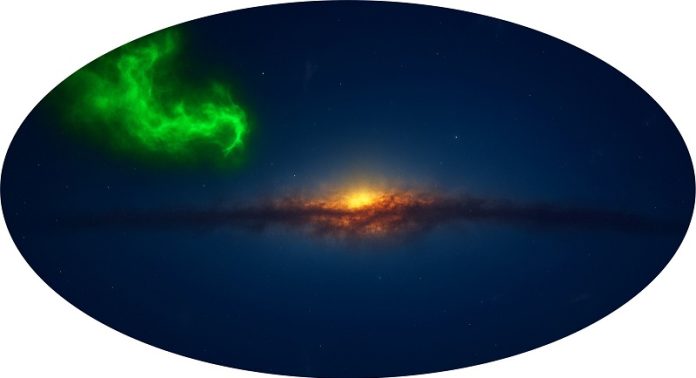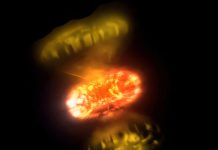
Astronomers have uncovered a surprisingly wild and tangled network of gas filaments inside a giant cloud far out in our Milky Way galaxy.
This discovery, made using China’s powerful FAST telescope—the world’s largest single-dish radio telescope—offers a new window into how interstellar clouds form and evolve in space.
The cloud, known as G165, is a very-high-velocity cloud (VHVC), meaning it’s moving through space at incredible speed—around 300 kilometers per second.
Located about 50,000 light-years from Earth and well above the busy disk of our galaxy, G165 sits in a quiet, less crowded region of space.
That isolation makes it an ideal place for scientists to study the early stages of cloud formation without interference from nearby stars or strong gravitational forces.
Previous studies of high-velocity clouds closer to the galactic center often found a mix of cold and warm gas.
But this new study found that G165 is made almost entirely of warm gas, called the warm neutral medium (WNM), and contains very little of the cold gas usually seen in other clouds. This could mean VHVCs like G165 represent an earlier and “cleaner” phase in the evolution of interstellar clouds.
What truly surprised the research team was the complexity hidden within the cloud. Thanks to the high sensitivity of FAST, astronomers were able to map the cloud in great detail using a radio signal known as the 21-centimeter hydrogen line.
Rather than being smooth and calm, the cloud is full of fast-moving, tangled filaments of gas—like a three-dimensional spiderweb stretched across space. These structures show signs of turbulence, with twisting patterns and shifts in velocity that suggest powerful, chaotic forces are at play.
To understand what was causing all this motion, the scientists ran computer simulations that included the effects of turbulence and magnetic fields.
The results matched what they observed in G165, showing that these forces alone—without gravity—can create such intricate and dynamic structures in space. That’s a major insight, since most theories about cloud formation focus heavily on the role of gravity.
This discovery, published in Nature Astronomy, helps scientists better understand how gas behaves in the outer parts of galaxies and how such clouds may eventually contribute to the birth of stars.
By revealing the supersonic, web-like structure of G165, this study opens up exciting new possibilities for exploring how matter is organized in the universe—even in places where gravity isn’t calling the shots.
Source: Chinese Academy of Sciences.



